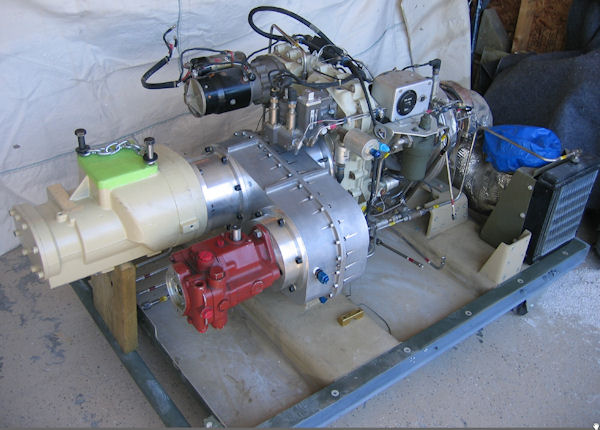- Turbine-Powered Oil Drilling Powerplant -
High-Peformance, Easily Transportable by Helicopter
NOTE: All our Products, Designs, and Services are SUSTAINABLE, ORGANIC, GLUTEN-FREE, CONTAIN NO GMO's, and will not upset anyone's precious FEELINGS or delicate SENSIBILITIES
Background
Reliable research has shown, and ongoing exploration explicitly verifies, that there are immense oil reserves on the North American continent. In view of those reserves, it is interesting to note that some of the countries on that continent are actually smart enough to realize that drilling and pumping their domestic reserves is:
- a highly effective way to reduce or eliminate dependence on foreigh suppliers,
- is beneficial to the country's economy and security,
- and can be done with ecologically-conservative methodology.
Oil exploration employs many interesting technologies. One of the very interesting methods relies on sophisticated computer control, acquisition, and analysis of the seismic reflections measured from hundreds of carefully-timed explosions, strategically placed in a matrix within the geography of interest.
In this exploration method, technicians drill a matrix of evenly-spaced deep holes on the surface of the area being explored, and place a small explosive charge at the bottom of each hole. The detonator for each charge is wired into a control computer.
Next, the engineers place a matrix of seismic sensors at critical locations within the exploration field. Those sensors are also wired into the the exploration control computer. When all the preparations are complete, the computer fires each charge in a specific sequence and monitors the seismic reflections from each explosion. Sophisticated signal propcessing algorithms are used to analyze the feedback signals in real time and to determine, from known geological responses, the location of a new reserve within the field of exploration.
The Problem
The drilling operations, especially in hostile mountainous terrain, require the use of helicopters to move the drilling equipment from site to site. Previous equipment used a diesel engine driving a huge air compressor and two large hydraulic pumps to power the drills. Relocating the powerplant, drills, explosives and other support equipment from drilling site to drilling site required two helicopter trips for each move, because the weight and size of the equipment exceeded what could be moved in one trip, especially considering the operational limitations of operating at high density altitides (high mountains, hot weather).
One Canadian exploration company visualized compressing all this equipment into a system that could be moved in one trip, thus cutting in half the number of helicopters required, and, by extension, cutting in half the amount of fuel burned.
The Solution
That company contracted with EPI, Inc. to design and prototype a complete system which would marry a lightweight, inexpensive T-62 turbine engine to the 100-HP air compressor and the two 25-HP hydraulic pumps required for the drill.
The system we developed is an evolution of the main gearbox system we developed for a small helicopter. It contains two separate drive systems, one for the air compressor at 6000 rpm and the other for a pair of hydraulic pumps at 2500 rpm. Each drive has its own separately-controllable wet hydraulic clutch, which enables the gas turbine engine to be started with no load, and enables either or both drives to be operational independently at any time. The system includes a filtered, cooled lubrication / scavenge system, a high-powered starting system, and many other refinements.
Here is a picture of the prototype of the full T-62-based powerplant with the EPI gearbox, air compressor and hydraulic pumps attached.

Turbine Engine-based Compressed Air and Hydraulic Pressure System

